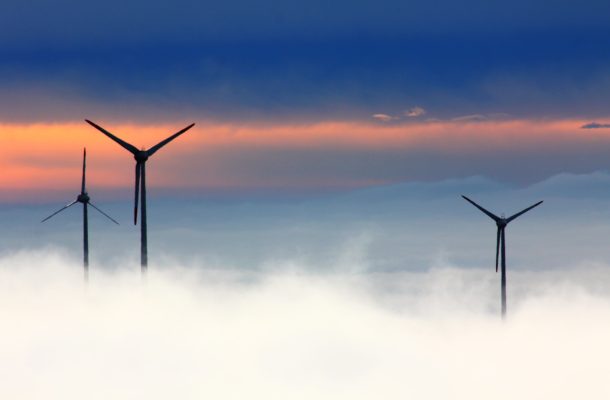Why we need far less storage than you think

The perennial question for renewables is: What do you do when the wind doesn’t blow, and the sun doesn’t shine?
In fact, most of the demand is when the sun is shining, while the wind is always blowing a little somewhere, and although we have limited annual hydro generation, we have much more hydro power than many other countries.
Peak hydro capacity is almost 25% of peak demand – compare that to 3% in the UK, 7% in Germany, 5% on the Texas ERCOT grid. In fact, combined import capacity + hydro in all those grids is less than our hydro alone.
Considering wind, the Aneroid website continuously displays the output of all eastern Australian wind farms, of which about half the capacity is older designs. You can see that even though some farms are stopped, total wind never drops below 5% capacity across the NEM. It is averaging around 32% now and some days reaches 75%.
Indeed, as I write this, for the last 72 hours 4.4 GW of wind generators in the eastern mainland states has been producing more power than 14 GW of gas and hydro combined.
The graph above shows that periods below 10% output are short and rare and new low wind turbines at different locations will smooth the output and lift the minimums. Image courtesy Anero.id.
New design wind turbines have 15-50m taller towers and 2-3 times the rotor area. Therefore, they start generating at ground level wind speeds of 8-10 km/h and reach maximum power at 30 km/h, whereas the 7-10-year-old models only start at 14-19 Km/h and produced maximum power at about 50- 55 km/h.
So, the new turbine is obviously generating for far more hours per year (typically 40% more) and therefore needs far less storage.
As an example of this technology improvement German output tripled while capacity only doubled from 2010 to 2017. In fact, Germany could take down all 13,000 wind turbines installed before 2002 and only lose 10% of its wind energy.
As these new turbine designs spread, capacity factors are going up. In Australia a couple of years ago, all wind turbines produced an average of 30% of their rated power. The newest wind farms averaged 48% in the first quarter of operation. Bulganna and Silverton are being built with 10-15-year contracts at 44%.
However, 65% of the capacity is concentrated in 10% of the area of the grid. New wind farms in northern NSW and Queensland and even in the midlands in Tasmania generate at different times than most of the existing farms.
Therefore, with increased geographic diversity and the increasing use of low wind types, minimum wind generation on the NEM will be soon be about 10% of total wind capacity. These very low speeds are usually only for a few hours. There are occasional weeks where the average output is only 22-25% but no more than 4-5 hours at a time below 10% even now
If we to reach 50% renewables, we will have about 20 GW of wind. To guarantee 6 GW requires 4 GW for 6-8 hours of new storage. Based on the various proposed pumped hydro projects like Kidston, Qld, and Cullerton, SA, that amount of storage will cost about $5-6 bn. We will still have at least 8GW of hydro and 25 GW of thermal power, a total of 39 GW capacity to meet 34 GW peak demand.
This is still overstating the demand for storage because low wind periods are usually during the day, when solar contributes, then as the sun dies down, sea breezes kick in and lift wind output as solar declines. On hot days of peak demand, wind never drops below 10% now. That will be at least 15% in a widely spaced balanced modern wind fleet.
Without too much of the mathematical detail, even a 90% renewable grid will still have about 12-16 GW of gas and coal, about 2 GW of sundry biomass /landfill/bagasse/waste to energy, 35 GW wind, 35 GW of solar and perhaps 1-2 GW of solar thermal. At peak demand, it will be able to guarantee about 10-14 GW from thermal sources. 7 GW from hydro, 5 GW from wind and 4-6 GW from all solar, in total 28-34 GW.
Due to greater energy efficiency, peak demand dropped across the NEM from 35.6 GW in 2010/11 to 32.6 GW last summer. This is still 30% higher than Californian peak demand per capita. By the time we are anywhere near 90% renewables, peak demand will have fallen to less than 30 GW.
Therefore, we would need 2-3 GW of storage, say 4 GW to be on the safe side. If the wind runs at its customary 38% CF, we will save most of the hydro and run the thermal plants at about 50%.
Based on the costs above, about $5-7 bn would handle the storage requirements. This is about the cost of a single 1,400 MW black coal plant or a 1,200 MW brown coal plant.
Yet even this is overstating the need for grid-based storage. By 2025, there will be between 3 and 6 GW of customer storage. By that time, wind and solar farms, and even transmission and distribution companies, will also be installing storage. In fact, about half a dozen projects have already been initiated
Wind and solar farms will occasionally find that they are generating more power than either their nearby transmission line or the market can absorb. By installing storage equal to 15% capacity for 2-3 hours, they can not only sell power that would otherwise be wasted, they can sell it into the market at a much better price than they would achieve when the market is saturated.
Thus, by the time the market reaches 20 GW of wind and 20 GW of solar there will probably be 1.5-3GW/ 6-8 GWh at the generators.
Similarly, distributors and even transmission companies locally and around the world are finding that, in many situations, it is cheaper to build storage at the end of the line to be charged off-peak, rather than upgrading transmission systems for the extra capacity only needed 20 hours per year. Sometimes a $2m investment in storage can substitute for a $3-5m transmission upgrade.
Then there is flexible demand (grid-controlled hot water, ice, pool pumps, chillers, water pumps, very occasional load shifting by industry) of around 2-4 GW.
In northern latitudes, there is an argument for large seasonal storage because demand is highest in winter where solar is of little help, so they need much more winter backup. Here, peak demand is in summer where solar will carry much of the demand.
Further solar doesn’t fall anywhere near as much in winter, while wind picks up, but demand falls so seasonal supply of renewables closely matches the demand profiles.
In summary, until renewables reach at least South Australian levels, it is hard to make the case for any mandated or government-owned storage, as customers and suppliers will install enough for their own economic advantage to provide almost all the grid-balancing services required.
Even after that time, depending on how the market for smart appliances, battery-electric vehicles and behind-the-meter generation and storage develops, it may well be that there is no need for large bulk storage ever.
Peter Farley is the President of the Victorian Vernier Society and former Deputy President of the Victorian Committee of Engineers Australia. He has also served as a Director of the Inner Melbourne VET Cluster for more than a decade.











